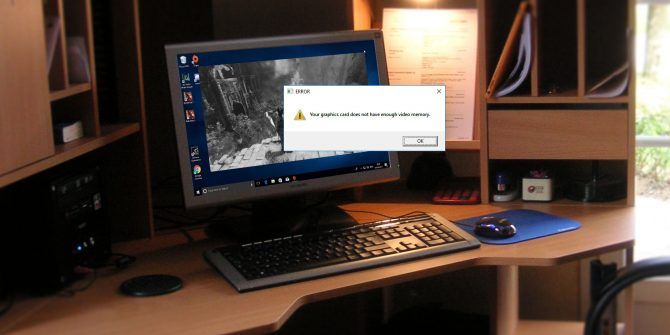
Why the M1 iPad Pro Is an Incredible Upgrade
25 abril, 2021
Most Users Aren’t Running the Latest Verison of Windows 10. Here’s Why.
25 abril, 2021Apple AirTags Explained: How They Work, Their Price, and More

Explicó Apple Airtags: cómo funcionan
After being heavily teased in rumors, Apple announced and released its AirTags at the April 2021 event. The name of the accessory is certainly in true Apple fashion, but you may be wondering what exactly these little discs do.
Let’s take a dive into what AirTags are.
As is often the case, AirTags were rumored for months before they were released at the 2021 spring event. The final product seems to be pretty on-track with what the rumors predicted.
AirTags are Apple’s approach to Bluetooth trackers. You may have seen these before, with the likes of Tile and Chipolo; AirTags are very similar. You can attach AirTags to any object such as keys, your wallet, or a backpack.
The Bluetooth trackers can show the location of your belongings through the Find My app, in case you lose them.
In a sleek, classic Apple minimalist design, AirTags look excellent, even for an accessory. You can also personalize your AirTag with letters (there’s not enough space for more than that) or emojis with free laser engraving.
Finding your lost belongings is the main feature of AirTags, and the handy little discs make it easy to do this.
Find Nearby Items With AirTags
For items that are still nearby, seeing the AirTags’ location on a map won’t be that helpful. So the Find My app allows you to play a loud sound from the AirTag’s built-in speaker instead.
This is exactly the same as when you make your iPhone ring with Find My iPhone. You can use the loud alerts to work out when you get close to your item as you crawl around on your living room floor.
You can also use Precision Finding to find your AirTag. Precision Finding uses the U1 ultra-wideband chip to give precise location data of your lost item. The feature uses the camera and accelerometer as well, providing an interactive finding experience in-app.
The app displays a full-screen interface with a navigation system guiding you towards with your device. An on-screen moving arrow and real-time information on how far away the AirTag is will also help you find your item. The haptic and audible feedback makes this a more interactive experience than you might expect.
Precision Finding is also available with support for accessibility features. One example is using VoiceOver, which can direct you to your AirTag with completely audible directions so the screen isn’t needed. Since AirTags also work with Siri, you can use the devices solely through voice.
You’re also able to set safe locations for AirTags through the Find My app. For example, if you leave your backpack at home when you go shopping, you won’t get an alert. It’s handy for any items you don’t always carry around with you.
Locate Far-Off Items Using AirTags
For objects that are far away, the process works a little differently. AirTags can be located by the Find My network of all Apple devices (approximately one billion units) with Find My turned on.
Using these devices, the system can work out the location of your AirTag and display it to you on a map in the Find My app. In true Apple fashion, privacy is key here. No location data of the AirTag or any user’s device is shared to anyone else; it’s only used to map the AirTag’s location.
If you don’t have any luck with your item’s location being detected, you can place the device into Lost Mode. In Lost Mode, if someone finds a lost AirTag, they can tap it using their iPhone or any NFC-capable device. This will take them to a website that displays a contact phone number for the owner, if they provided one. This lets whoever found your item get in touch with you to return your belongings.
AirTags have an IP67 rating. This means that they are protected against intrusion from solid objects like dust and sand, and have been tested to work for at least 30 minutes while underwater at roughly three feet of depth.
AirTags have a built-in safety features to stop them from nefarious use. If your iPhone detects that an unknown AirTag has been moving with you for a while, you’ll get an alert letting you know of this shady behavior.
It’s likely that this safety feature will be pretty accurate, as the ultra-wideband chip used in AirTags gives very precise reading of the device’s location. Since your iPhone can also detect when you’re traveling, you’re unlikely to see this alert by mistake when on public transportation, for example.
Another safety feature is that the Bluetooth signal identifiers transmitted by AirTags regularly change to stop anyone from monitoring and potentially intercepting the signal.
AirTags primarily work using Bluetooth (specifically battery-friendly Bluetooth LE) to communicate with your iPhone and the Find My app. This is how data communicates between the two devices, which is used in the process of pairing the trackers.
Apple also use the U1 ultra-wideband chip inside AirTags. These chips can give precise location data using ultra-wideband radio waves. To work out the AirTag’s location, this chip will measure the time it takes for that radio wave to pass between the two devices.
With such accurate location tracking technology, the location AirTags provide will likely be more reliable than competitors’ products, especially when combined with the Find My network.
The battery on AirTags is user replaceable, as predicted. It takes a circular CR battery like other Bluetooth trackers. Apple claims that the battery on an AirTag will last up to a year, so you won’t often need to open up the unit.
To use AirTags, you must first pair the device with your iPhone or iPad. To do this, Apple uses the same seamless experience as when you first pair AirPods. You just bring the device close to your iPhone, and the connection will pop up on the screen.
You use AirTags through the Find My app on your iPhone or iPad. Through this app you’ll be able to see where your items are, plus manage your AirTags after pairing them. Playing a sound and enabling Lost Mode are all controlled through the app.
Other than using the app to see where your AirTags are and managing them, you don’t really need to do anything to use AirTags. After setting them up, AirTags are designed to just come along and carry out their tracking functions without any interaction—other than changing the battery when necessary.
AirTags require iOS 14.5 or later on your iPhone. You must also have an Apple ID and be signed in to iCloud on your iPhone. To use the features with Find My, you’ll need to have Find My enabled in your phone’s Settings app as well.
AirTags are priced at $29 for one, or $99 for a bundle of four. They’re available starting Friday, April 30.
This price is pretty standard across competitors. Tile‘s basic tracker comes in at $25, with the pro model being slightly more expensive at $35. The caveat with both products is that you can only order either two or four at a time. Chipolo‘s standard tracker costs an even $25, with different products available too.
As usual with Apple, there are a bunch of accessories for AirTags. You’ll probably need a few of these accessories in order to actually attach AirTags to certain items.
The keychain is the main accessory for AirTags. Slipping the disc into one of the carrying keychains allows you to attach the AirTag to your keys like any other keychain. Apple released its own range of these, but you’re bound to see third-party accessory makers bring out their own versions pretty quickly.
Apple and Hermès worked together on an exclusive Hermès accessories range. These exclusive keychain cases will be sold with a custom-engraved AirTag based on the brand’s iconic signature.
To Track or Not to Track?
Whether or not you need a Bluetooth tracker will depend on how often you lose your important items. If you find yourself regularly misplacing or forgetting your everyday essentials like keys or your purse, then you’ll likely find AirTags pretty useful.
Even if you don’t, having that extra safety blanket just-in-case is handy. AirTags do have their own unique location features and access to the Find My, which adds up to a currently unbeatable solution.
Image credits: Apple
Read Next
About The Author






